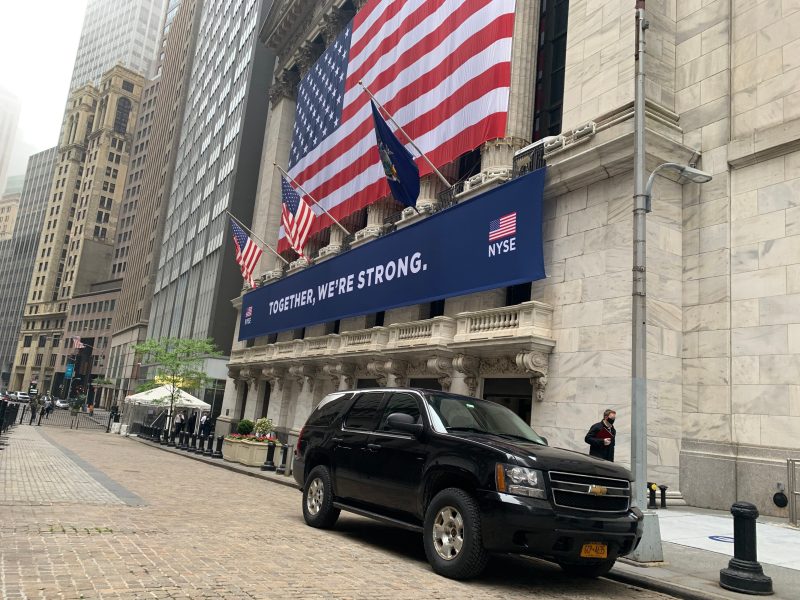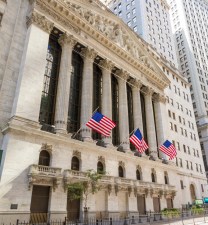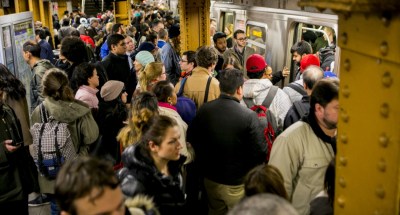Wall Street Traders Are Not Traitors — They WANT to Use Public Transit

The Masters of the Universe want to be more down to earth than their bosses will let them.
New York Stock Exchange employees returned to work Tuesday morning — and even though they mostly shifted from public transit to private cars, many said they couldn’t wait to get back to public transit to get to work.
“I know it’s for our health, but I think the stock exchange was being overly cautious,” said one trader, referring to the NYSE’s total ban on workers using public transportation to get to the fabled trading floor at Broad and Wall streets in Lower Manhattan — a corner of the world that was doing fine for hundreds of years before the invention of the automobile.
That trader said he drove in from Breezy Point for today’s reopening — a trip that he would normally take via ferry. He intends to return to that mode if the stock exchange gives the OK, even though the drive only took him 36 minutes.

Many traders admitted that their drive to work — plus the subsidized parking at a nearby garage — halved their commutes. One broker said he drove in from Connecticut — he usually takes Metro-North — and made it in 45 minutes.
“But this isn’t the way it should be,” he said. “Because if everyone drove, it would take me 45 hours instead of 45 minutes — and I’d have an aneurysm!”
Few traders wanted to discuss the workplace ban — they’re paid to move stocks, not talk to the media — but those who did said they didn’t like driving. Even two guys who carpooled in from Rockland County in half the time it normally takes said they preferred their normal commutes: one takes a ferry to a train and another takes a train to the PATH.
“I drove in from Queens, but I usually take the Long Island Rail Road,” added Kirk Katzburg, one of the few Wall Streeters willing to attach his name to his exercise of free speech rights. “Do I like the ban? No, but I like working more, so I drove.” He said he parked at the Battery Parking Garage two blocks from the Exchange, where NYSE officials had “worked out a deal.”
A steady stream of cars, many with Jersey or Connecticut plates, entered the garage all morning. A worker said it was the most business he’d seen in weeks. That said, it is ultimately unclear if the ban on public transit will have a serious impact on Lower Manhattan congestion, air quality or livability. Other car traffic is down dramatically as New York remains on “pause,” and only about 100 traders will return to the stock exchange in the near term, said one worker.
Photos after the opening bell showed a mostly empty trading floor, which has long outlived its actual utility in an age of computer-to-computer stock trades.

The governor’s office did not respond to requests for comment. A Stock Exchange spokesperson said the NYSE did not arrange for alternative transportation for the traders because they’re not technically stock exchange employees, but merely use the trading floor to conduct their private business. The stock exchange did not conduct any surveys or analysis of the impact that the public transit ban might have on Lower Manhattan.
Just as the opening bell was sounding, Mayor de Blasio told reporters that he remains concerned about the coming carpocalypse:
“The future is going to be mass transit,” he said when asked about the Wall Street road warriors. “We’re dealing with the immediate crisis right now, but when we come out of this crisis, we have to double down on mass transit and we have to double down on our efforts to get away from our over-reliance on vehicles.”
The mayor said he and is team are “working on that right now.”
They’ll need to. By afternoon, the streets around the Holland Tunnel were a jam-packed mess:
Canal Street is once again an unlivable hellscape, great job everyone!!!! pic.twitter.com/g5Nk9QQiNi
— Hayley Richardson (@bagatelleno12) May 26, 2020
Maybe the governor himself contributed to the gridlock, given that he drove to the Exchange.
Here is @NYGovCuomo defiling one of NYC’s few pedestrianized zones. A fitting symbol of the coming carpocalyse that he is doing nothing to mitigate (indeed, he is encouraging it). Outrage. https://t.co/SD5kq7PxpD
— Streetsblog New York (@StreetsblogNYC) May 27, 2020



